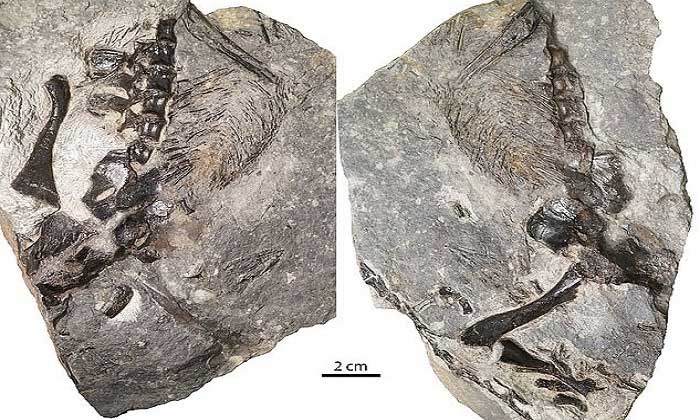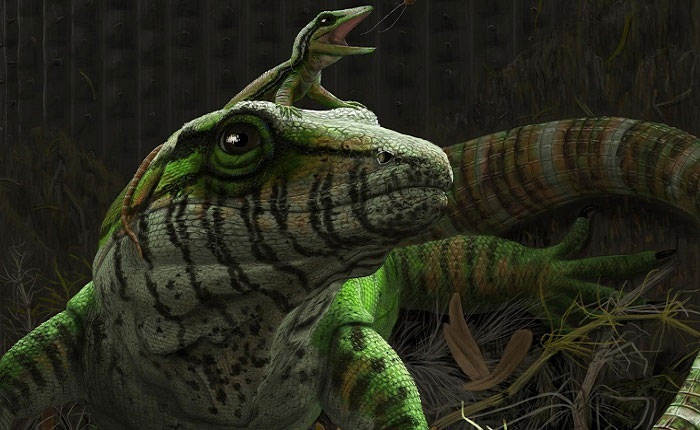309 million fossils of mother and son of lizard
The primordial lizard fossils curling around young animals are the first example of animal feeding behavior in the animal kingdom.

Fossils hold the mother and baby lizards.(Photo: Independent)
The 309 million-year-old fossil specimen included a young lizard corpse lying on its back next to its hind leg. This finding proves that postpartum childbearing behavior appeared about 40 million years earlier than previously thought. The research results are published in Nature Ecology & Evolution.
Mother and baby lizards die suddenly by a tree in a forest in Nova Scotia, Canada. Here, the mother lizard burrows to raise a child. The animal, named Dendromania unamakiensis , is derived from the Greek words "tree" and "mother-child". D. unamakiensis belongs to the varanopid group, related to the earliest ancestors of mammals.

Reconstructed appearance of the lizard D. unamakiensis.(Photo: Independent)
"D. unamakiensis has a lizard-like shape. The preservation status of the two individuals, including the small skeletal structure supporting the abdominal muscles, shows that they are buried quickly and are unable to move. In other words, they both died at the fossil site where the cause was unknown, " said Dr. Hillary Maddin of Carleton University, who co-authored the study.
According to Dr. Maddin, the calf is under the hind limb and surrounded by the tail of the mother lizard, a common position in burrowing animals. This strengthens the theory that they live in a cave surrounded by the root system of a tree.
The mother lizard is about 20cm long from the nose to the base of the tail, eating insects and other small vertebrates. The team said tracking the evolution of postnatal care is often difficult because it is rare for them to find fossils of individual parents and young children in the same place.
- 120 million year old lizard fossils found
- Fossil discovered 'lizard king' before the tyrant dinosaur
- Detecting sea lizard fossils 75 million years
- Discover the oldest lizard lord
- Dog sniffs see ancient fish lizard fossils
- Mexico: Lizard discovered 23 million years old
- Flying lizard eggs 120 million years in China
- Detection of giant dinosaur fossils in Argentina
- Discovered dinosaurs never known in Argentina
- Detection of prehistoric lizard fossils
- Found fossil lizard 120 million years old
- Fossils reveal the ancestors of today's lizards and snakes
- The discovery of two-headed lizard fossils in China
- Argentina discovered dinosaur fossils living more than 200 million years ago today
 Discovered an ancient centipede fossil 99 million years old
Discovered an ancient centipede fossil 99 million years old Discovered bat-like dinosaurs in China
Discovered bat-like dinosaurs in China Discovered a 200-year-old bronze cannon of the coast
Discovered a 200-year-old bronze cannon of the coast Discover 305 million-year-old spider fossils
Discover 305 million-year-old spider fossils